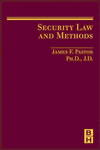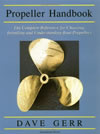All Articles
Aerosols - Aerosol Products
Industrial Precision Cleaning
Antitrust
Intellectual Property
Applied Mechanics
Investigation & Surveillance
Aquatics Safety
Laws & Procedures
Architecture
Legal Issues
Arms - Guns - Weapons
Manufacturing
Biomechanics
Market Research
Branding - Brand Management
Medical - Medicine
Child Witch Phenomenon
Medical Devices / Inventions
Commercial Diving
Meteorology
Corrosion
Neuropsychology
Dental - Dentistry
Pain Management
Disability
Physician Assistants
Domestic Violence
Police Practices & Procedures
Education & Schools
Product Liability
Elder - Geriatrics
Professional Skills
Electrical - Electrocution
Public Speaking
Employment
Recreation & Sports
Engines (Combustion - Diesel)
Regulations and Codes Standards
Ethics / Ethical Duties
Remote Sensing Image / Satellite Data Analysis
Expert Witnessing
Research Methodology
Failure Analysis
Restaurant Industry: Operations & Development
Finance
Social Issues
Forgery & Fraud
Speech-Language Pathology
Fuel Systems
Supply Chain Management
More...

ENGINEERING-PAGE ARTICLES MAIN PAGE
. Contact Us if you are interested in having your work published on our website and linked to your Profile(s).
All Articles
Alcohol, Tobacco & Other Drugs
Legal Issues
All-Terrain Vehicles (ATV / UTV)
Logistics - Reverse Logistics
Architecture
Marine - Maritime
Arms - Guns - Weapons
Mediation
Aviation
Medical Records Review
Banking
Medicine
Boating
Meditation
Casinos - Gambling - Gaming
Nonprofit Organizations
Computer Forensics
OSHA
Construction
Physician Assistants
Disability
Plastic / Reconstructive / Cosmetic Surgery
DNA (Deoxyribonucleic Acid)
Pollution - Air Quality Control
Documentation Examination & Analysis
Power Supplies
Elder - Geriatrics
Refrigeration - Cooling Systems
Elevators - Escalator - Automatic Doors
Relationships & Dating
Emergency Medical Services (EMS)
Research Methodology
Engines (Combustion - Diesel)
Retirement Planning
Family Issues
Security
Forensic Psychiatry
Sexual Abuse - Molestation - Harassment
Fuel Systems
Spirituality
Human Factors
Statistical Analysis
Human Resources
Telecommunication
Internet Marketing
Vocational Rehabilitation And Counseling
Islamic & Sharia Law
Wilderness Emergency Medicine
Land Mapping - Surveying - Zoning
Yoga
More...
Featured Articles
There are no active articles here at this time. Please use the search bar, try another category, or contact us if you would like to contribute an article.
This Article is unavailable. Contact Us
Search articles by title, description, author etc.
Sort Featured Articles
Featured resources
Security Law and Methods
by James F. Pastor, PhD, JD
The Deposition Handbook: A Guide to...
by Virginia A. Lathan
The Propeller Handbook: The Complete...
by Dave Gerr, CEng, FRINA
Follow us










